HANS SPIEGEL* (Münnerstadt 1894 - 1966 Stuttgart) Stillleben mit Masken Öl/Holz, 92 x 122 cm monogrammiert H. S. abgebildet in Expressiver Realismus in Deutschland, Wien 2017, S. 5, Kat. Nr. 5 Provenienz: Auktionshaus Nagel Stuttgart, Privatbesitz Österreich SCHÄTZPREIS: € 10.000 - 15.000 Deutscher Künstler des 20. Jahrhunderts. Studierte an der Münchner Akademie bei Gabriel von Hackl und Angelo Jank ab 1918 bei Christian Landenberger in Stuttgart. 1919 gemeinsam mit seinen Studienkollegen Oskar Schlemmer Willi Baumeister und Albert Mueller Gründung der Üecht-Gruppe. 1919 stellte er in Stuttgart aus, 1920 Beteiligung an der Ausstellung der Novembergruppe in Berlin. Jury-Mitglied der Stuttgarter Sezession, 1925 Professor und 1932 bis 1943 Direktor an der Stuttgarter Akademie. 1929 Gründung der Gruppe 29 gemeinsam mit Adolf Walschmidt, Gottfried Graf und Albert Mueller. Starker Einfluss des Kubismus, runde organische, auch menschliche Formen im Wechselspiel mit geometrischen Formen. Frühe Arbeiten wie das Stillleben mit Masken, Topfpflanze, Birnen, Büchern und einem Krug sind nur wenige erhalten. Spiegel studierte an der Münchner Akademie bei Gabriel von Hackl und Angelo Jank Nach 1918 setzte er seine künstlerische Ausbildung bei Christian Landenberger in Stuttgart fort. Unter seinen Studienkollegen waren Oskar Schlemmer Willi Baumeister und Albert Mueller. Aus deren intensiven Austausch ging 1919 die Stuttgarter „Üecht-Gruppe“ hervor. 1919 nahm er an der Ausstellung des Deutschen Künstlerbundes in Stuttgart teil, 1920 beteiligte er sich an der Schau der Berliner „Novembergruppe“ in Rom. Als Vertreter der Stuttgarter Ortsgruppe stellte er 1921, 1922 und 1923 bei der Großen Berliner Kunstausstellung aus. Von 1924 bis 1928 war Spiegel Jury-Mitglied der „Stuttgarter Sezession“. 1925 erhielt er eine Professur an der Stuttgarter Akademie, der er von 1932 bis 1943 als Direktor vorstand. 1929 erhielt der Künstler den Württembergischen Staatspreis und im selben Jahr gründete er gemeinsam mit Adolf Walschmidt, Gottfried Graf und Albert Mueller die „Gruppe 29“ Stuttgart. Das Frühwerk Spiegels wurde im 2. Weltkrieg durch Bombenangriffe nahezu vollständig zerstört. Auf eine besondere Richtung von Modernität verweist Hans Spiegels expressionistisch befeuertes „Stillleben mit Masken“. Es zählt zu den allegorisch überhöhten Maskenstillleben, die wir von so unterschiedlich gearteten Künstlern wie James Ensor Emil Nolde Karl Hofer Anton Kolig oder Sergius Pauser kennen und mehr meint als die übliche realistische Atelierstudie mit dem zumeist aus Blumen, Früchten gebildeten Arrangement. Die hier aufgetürmten clownesken Masken mit den langen Nasen bilden mit dem steilschräg am Tisch aufgestellten Früchteteller, dem roten Krug, Kelchglas, Blumenstock und den Büchern gleichsam die Requisiten für eine an der Grenze zwischen Realität und Halluzination angesiedelte Theatervorstellung. Darin geht es um das Versteckspiel hinter den Masken, um die Möglichkeiten, für eine Weile aus dem normalen Leben auszusteigen und sich als ein Anderer zu probieren. Der Vorhang am linken Bildrand unterstreicht dabei diese theatralische Dimension.
HANS SPIEGEL* (Münnerstadt 1894 - 1966 Stuttgart) Still Life with Masks oil/wood, 92 x 122 cm monogrammed H.S. depicted in Expressiver Realismus in Deutschland, Vienna 2017, p. 5, N. 5 Provenance: Nagel auctions Stuttgart, private property Austria ESTIMATE € 10.000 - 15.000 German artist of the 20th century. Studied at the Munich Academy with Gabriel von Hackl and Angelo Jank and from 1918 with Christian Landenberger in Stuttgart. In 1919, together with his fellow students Oskar Schlemmer Willi Baumeister and Albert Mueller, founded the Üecht Group. In 1919 he exhibited in Stuttgart, 1920 participation in the exhibition of the Novembergruppe in Berlin. Jury member of the Stuttgart Secession, 1925 professor and 1932 to 1943 director at the Stuttgart Academy. 1929 Founds Group 29 together with Adolf Walschmidt, Gottfried Graf and Albert Mueller. Strong influence of Cubism, round organic, also human forms in interplay with geometric forms. Early works such as the still life with masks, potted plant, pears, books and a jug are only a few survived. Spiegel studied at the Munich Academy with Gabriel von Hackl and Angelo Jank After 1918 he continued his artistic training with Christian Landenberger in Stuttgart. Among his fellow students were Oskar Schlemmer Willi Baumeister and Albert Mueller. The Stuttgart "Üecht Group" emerged from their intensive exchange in 1919. In 1919 he took part in the exhibition of the German Association of Artists in Stuttgart, and in 1920 he took part in the show of the Berlin "November Group" in Rome. As a representative of the Stuttgart local group, he exhibited in 1921, 1922 and 1923 at the Great Berlin Art Exhibition. From 1924 to 1928 Spiegel was a jury member of the "Stuttgart Secession". In 1925 he received a professorship at the Stuttgart Academy, of which he was director from 1932 to 1943. In 1929 the artist received the Württemberg State Prize and in the same year he founded the "Group 29" Stuttgart together with Adolf Walschmidt, Gottfried Graf and Albert Mueller. Spiegel's early work was almost completely destroyed by air raids during World War II. Hans Spiegel's "Still life with masks", fueled by expressionism, points to a special direction of modernity. It is one of the allegorically exaggerated mask still lifes that we know from artists as diverse as James Ensor Emil Nolde Karl Hofer Anton Kolig or Sergius Pauser and means more than the usual realistic studio study with the arrangement mostly made of flowers and fruits. The piled up clownesque masks with long noses, together with the fruit plate placed at a steep angle on the table, the red jug, goblet, flower stick and books, form the props, so to speak, for a theatrical performance situated on the border between reality and hallucination. It's about the game of hide-and-seek behind the masks, about the possibilities of stepping out of normal life for a while and trying to be someone else. The curtain on the left edge of the picture underlines this theatrical dimension.
HANS SPIEGEL* (Münnerstadt 1894 - 1966 Stuttgart) Stillleben mit Masken Öl/Holz, 92 x 122 cm monogrammiert H. S. abgebildet in Expressiver Realismus in Deutschland, Wien 2017, S. 5, Kat. Nr. 5 Provenienz: Auktionshaus Nagel Stuttgart, Privatbesitz Österreich SCHÄTZPREIS: € 10.000 - 15.000 Deutscher Künstler des 20. Jahrhunderts. Studierte an der Münchner Akademie bei Gabriel von Hackl und Angelo Jank ab 1918 bei Christian Landenberger in Stuttgart. 1919 gemeinsam mit seinen Studienkollegen Oskar Schlemmer Willi Baumeister und Albert Mueller Gründung der Üecht-Gruppe. 1919 stellte er in Stuttgart aus, 1920 Beteiligung an der Ausstellung der Novembergruppe in Berlin. Jury-Mitglied der Stuttgarter Sezession, 1925 Professor und 1932 bis 1943 Direktor an der Stuttgarter Akademie. 1929 Gründung der Gruppe 29 gemeinsam mit Adolf Walschmidt, Gottfried Graf und Albert Mueller. Starker Einfluss des Kubismus, runde organische, auch menschliche Formen im Wechselspiel mit geometrischen Formen. Frühe Arbeiten wie das Stillleben mit Masken, Topfpflanze, Birnen, Büchern und einem Krug sind nur wenige erhalten. Spiegel studierte an der Münchner Akademie bei Gabriel von Hackl und Angelo Jank Nach 1918 setzte er seine künstlerische Ausbildung bei Christian Landenberger in Stuttgart fort. Unter seinen Studienkollegen waren Oskar Schlemmer Willi Baumeister und Albert Mueller. Aus deren intensiven Austausch ging 1919 die Stuttgarter „Üecht-Gruppe“ hervor. 1919 nahm er an der Ausstellung des Deutschen Künstlerbundes in Stuttgart teil, 1920 beteiligte er sich an der Schau der Berliner „Novembergruppe“ in Rom. Als Vertreter der Stuttgarter Ortsgruppe stellte er 1921, 1922 und 1923 bei der Großen Berliner Kunstausstellung aus. Von 1924 bis 1928 war Spiegel Jury-Mitglied der „Stuttgarter Sezession“. 1925 erhielt er eine Professur an der Stuttgarter Akademie, der er von 1932 bis 1943 als Direktor vorstand. 1929 erhielt der Künstler den Württembergischen Staatspreis und im selben Jahr gründete er gemeinsam mit Adolf Walschmidt, Gottfried Graf und Albert Mueller die „Gruppe 29“ Stuttgart. Das Frühwerk Spiegels wurde im 2. Weltkrieg durch Bombenangriffe nahezu vollständig zerstört. Auf eine besondere Richtung von Modernität verweist Hans Spiegels expressionistisch befeuertes „Stillleben mit Masken“. Es zählt zu den allegorisch überhöhten Maskenstillleben, die wir von so unterschiedlich gearteten Künstlern wie James Ensor Emil Nolde Karl Hofer Anton Kolig oder Sergius Pauser kennen und mehr meint als die übliche realistische Atelierstudie mit dem zumeist aus Blumen, Früchten gebildeten Arrangement. Die hier aufgetürmten clownesken Masken mit den langen Nasen bilden mit dem steilschräg am Tisch aufgestellten Früchteteller, dem roten Krug, Kelchglas, Blumenstock und den Büchern gleichsam die Requisiten für eine an der Grenze zwischen Realität und Halluzination angesiedelte Theatervorstellung. Darin geht es um das Versteckspiel hinter den Masken, um die Möglichkeiten, für eine Weile aus dem normalen Leben auszusteigen und sich als ein Anderer zu probieren. Der Vorhang am linken Bildrand unterstreicht dabei diese theatralische Dimension.
HANS SPIEGEL* (Münnerstadt 1894 - 1966 Stuttgart) Still Life with Masks oil/wood, 92 x 122 cm monogrammed H.S. depicted in Expressiver Realismus in Deutschland, Vienna 2017, p. 5, N. 5 Provenance: Nagel auctions Stuttgart, private property Austria ESTIMATE € 10.000 - 15.000 German artist of the 20th century. Studied at the Munich Academy with Gabriel von Hackl and Angelo Jank and from 1918 with Christian Landenberger in Stuttgart. In 1919, together with his fellow students Oskar Schlemmer Willi Baumeister and Albert Mueller, founded the Üecht Group. In 1919 he exhibited in Stuttgart, 1920 participation in the exhibition of the Novembergruppe in Berlin. Jury member of the Stuttgart Secession, 1925 professor and 1932 to 1943 director at the Stuttgart Academy. 1929 Founds Group 29 together with Adolf Walschmidt, Gottfried Graf and Albert Mueller. Strong influence of Cubism, round organic, also human forms in interplay with geometric forms. Early works such as the still life with masks, potted plant, pears, books and a jug are only a few survived. Spiegel studied at the Munich Academy with Gabriel von Hackl and Angelo Jank After 1918 he continued his artistic training with Christian Landenberger in Stuttgart. Among his fellow students were Oskar Schlemmer Willi Baumeister and Albert Mueller. The Stuttgart "Üecht Group" emerged from their intensive exchange in 1919. In 1919 he took part in the exhibition of the German Association of Artists in Stuttgart, and in 1920 he took part in the show of the Berlin "November Group" in Rome. As a representative of the Stuttgart local group, he exhibited in 1921, 1922 and 1923 at the Great Berlin Art Exhibition. From 1924 to 1928 Spiegel was a jury member of the "Stuttgart Secession". In 1925 he received a professorship at the Stuttgart Academy, of which he was director from 1932 to 1943. In 1929 the artist received the Württemberg State Prize and in the same year he founded the "Group 29" Stuttgart together with Adolf Walschmidt, Gottfried Graf and Albert Mueller. Spiegel's early work was almost completely destroyed by air raids during World War II. Hans Spiegel's "Still life with masks", fueled by expressionism, points to a special direction of modernity. It is one of the allegorically exaggerated mask still lifes that we know from artists as diverse as James Ensor Emil Nolde Karl Hofer Anton Kolig or Sergius Pauser and means more than the usual realistic studio study with the arrangement mostly made of flowers and fruits. The piled up clownesque masks with long noses, together with the fruit plate placed at a steep angle on the table, the red jug, goblet, flower stick and books, form the props, so to speak, for a theatrical performance situated on the border between reality and hallucination. It's about the game of hide-and-seek behind the masks, about the possibilities of stepping out of normal life for a while and trying to be someone else. The curtain on the left edge of the picture underlines this theatrical dimension.
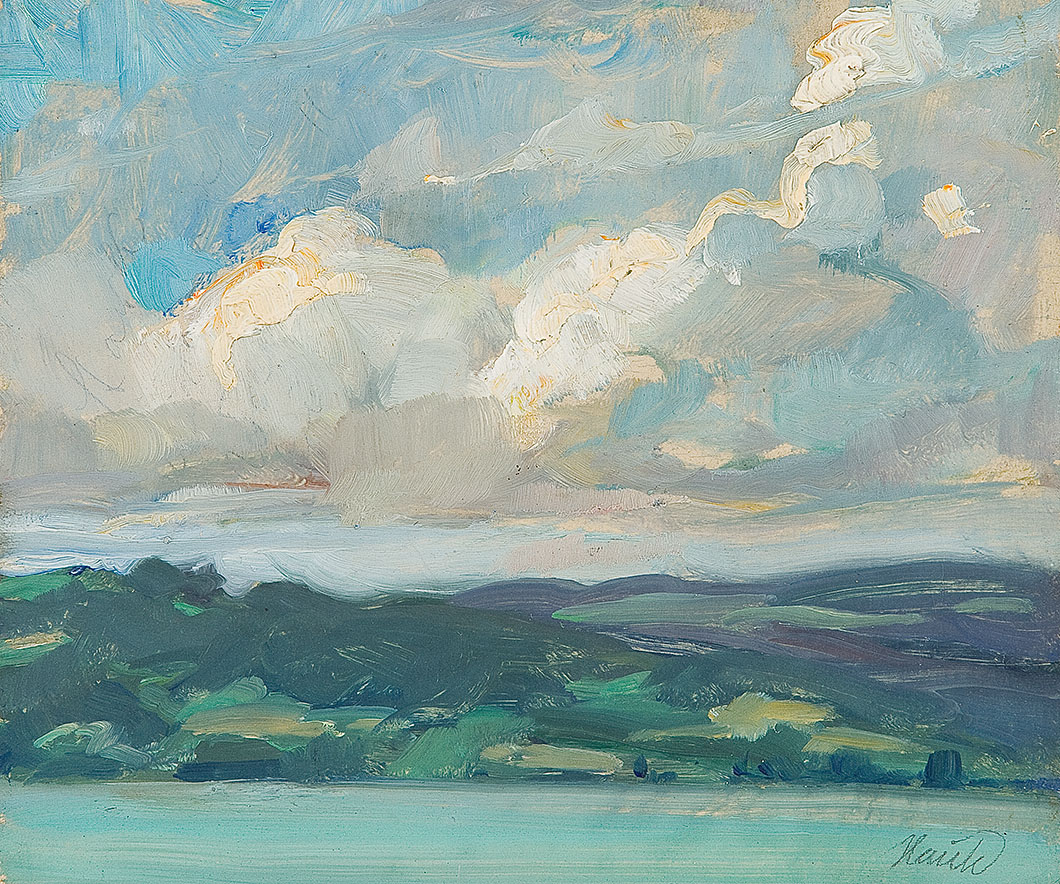
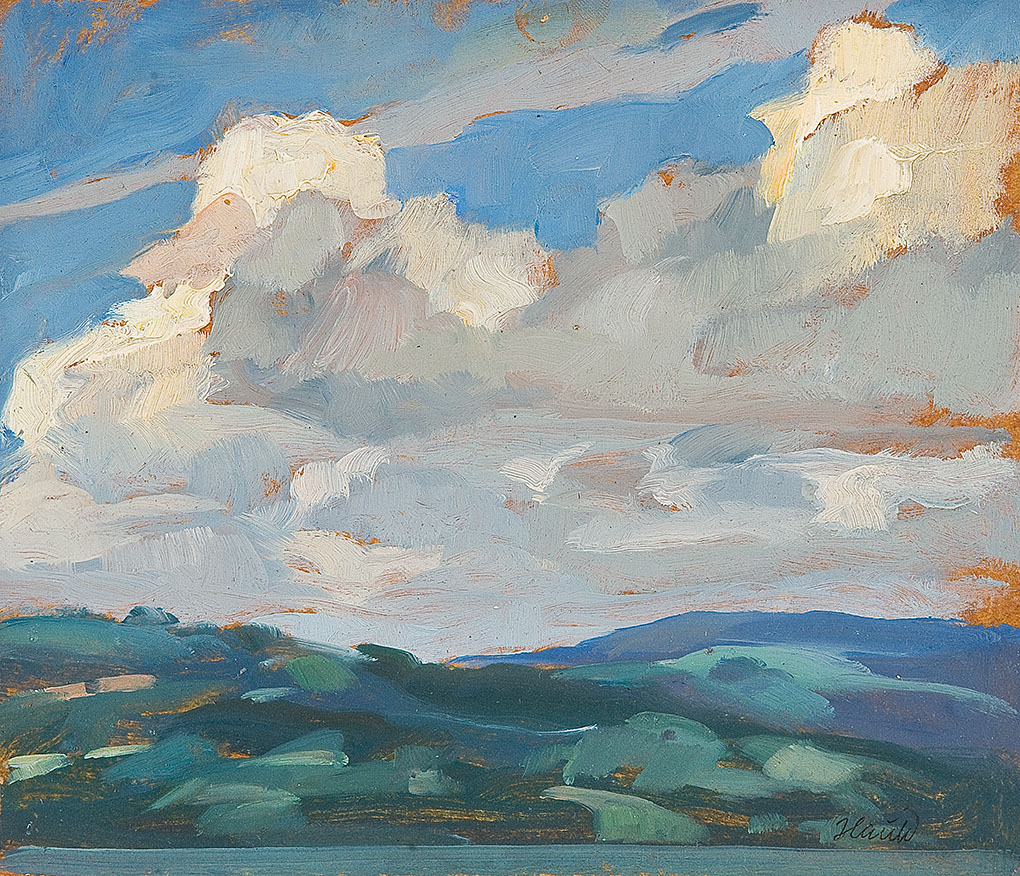
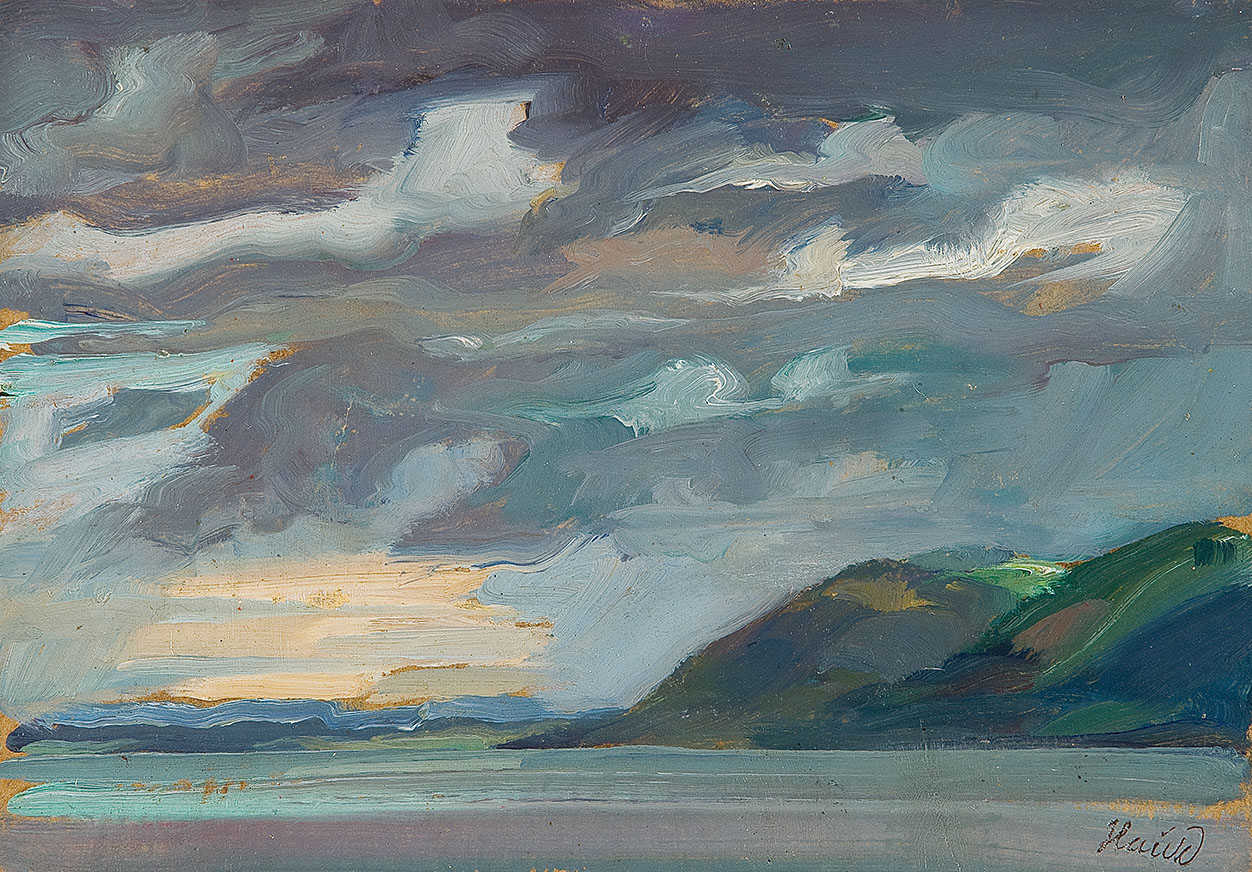
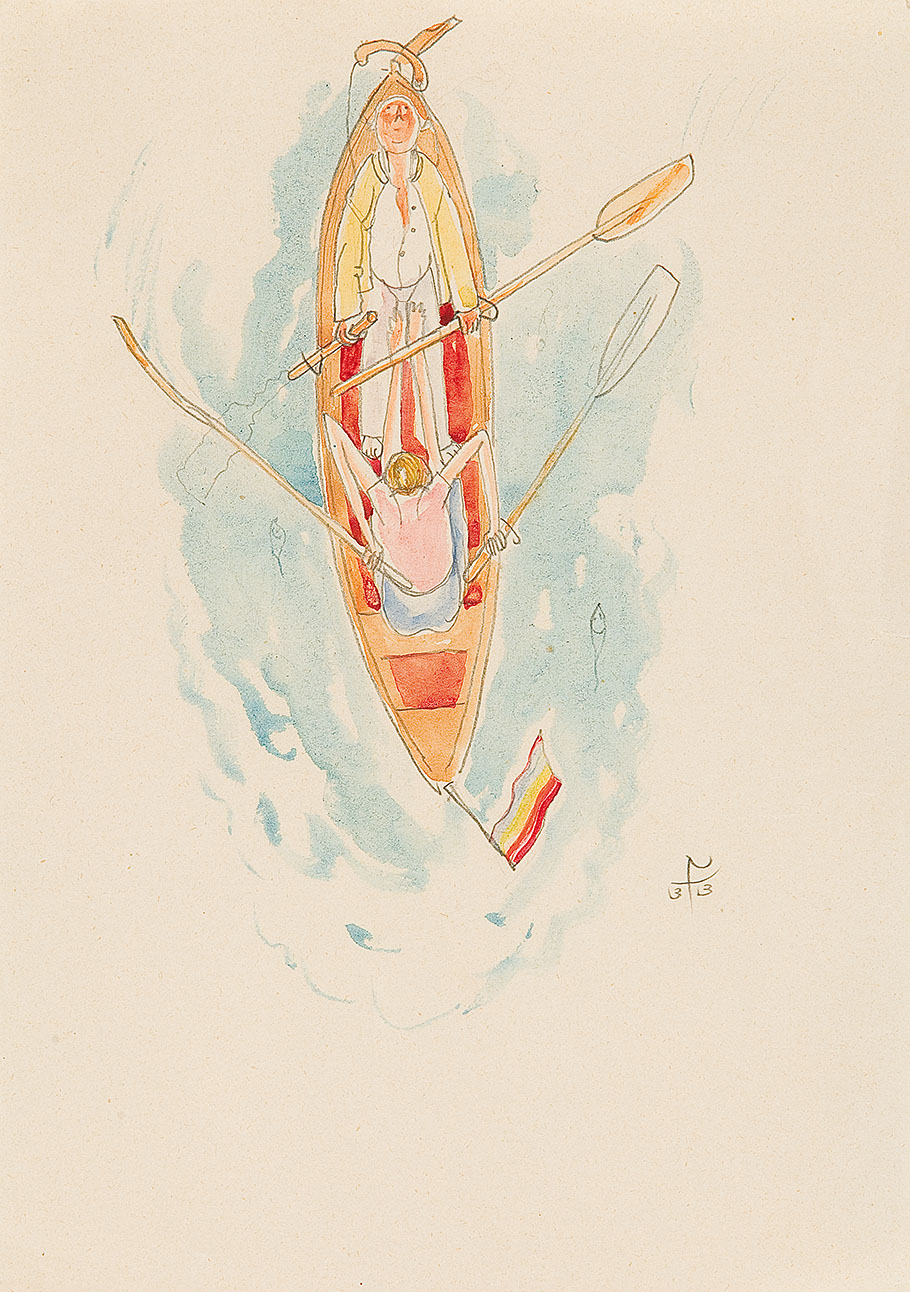
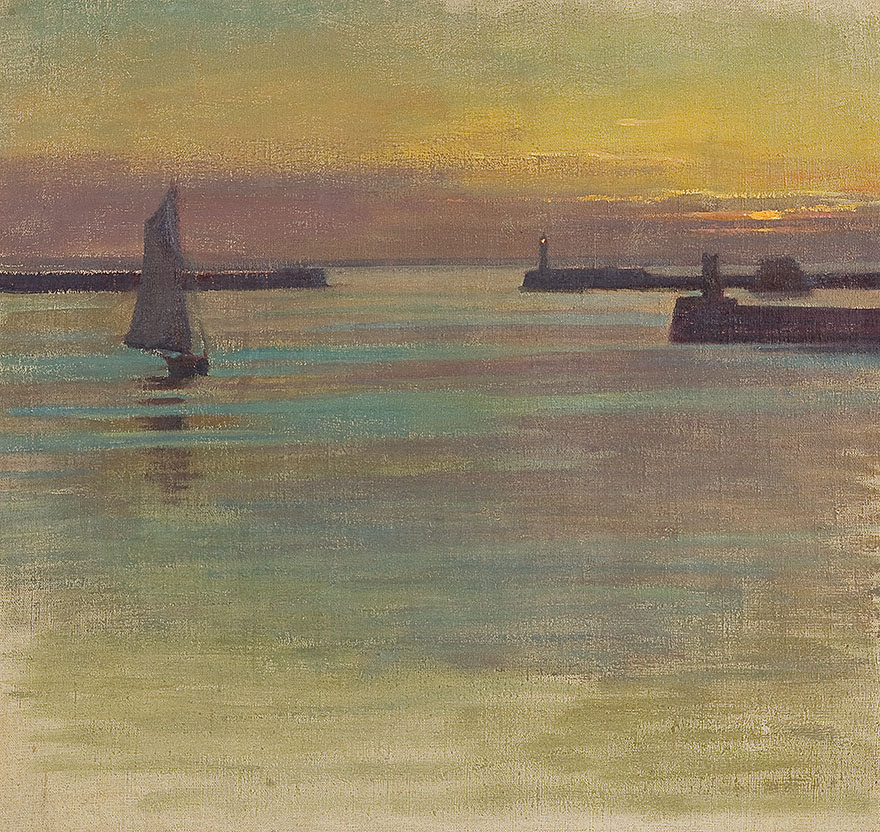

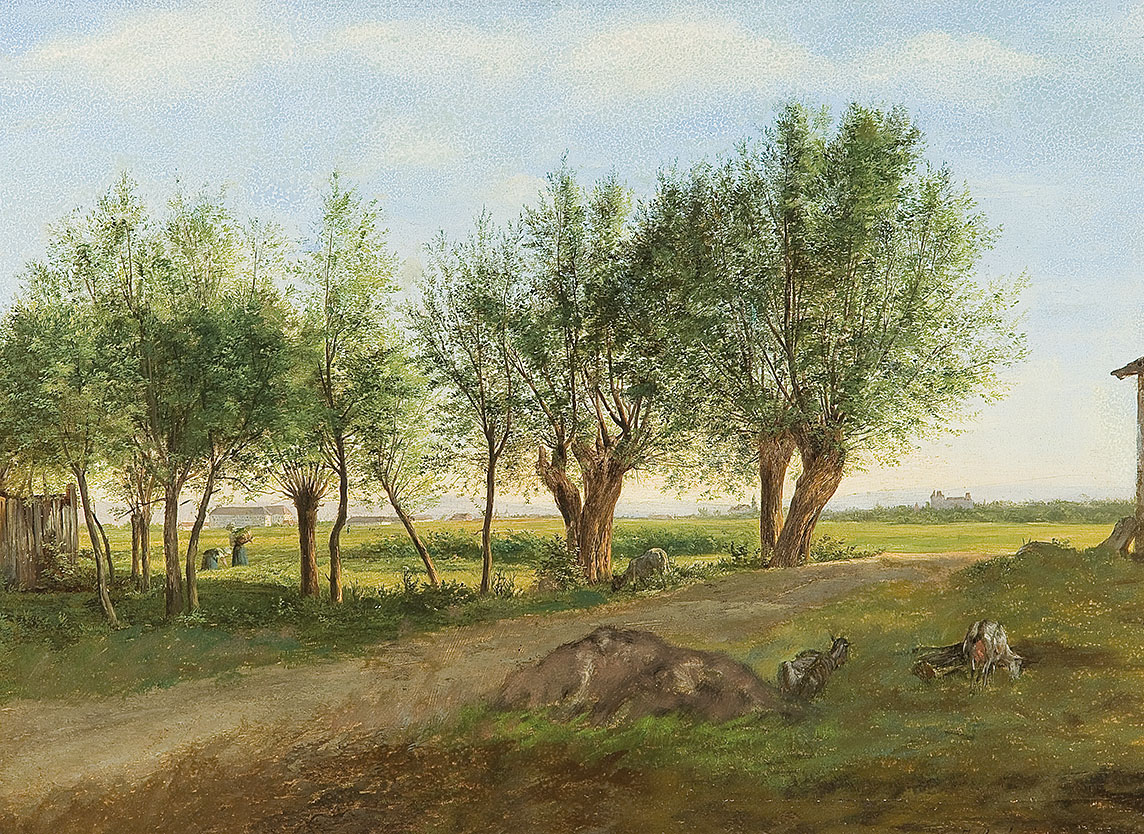
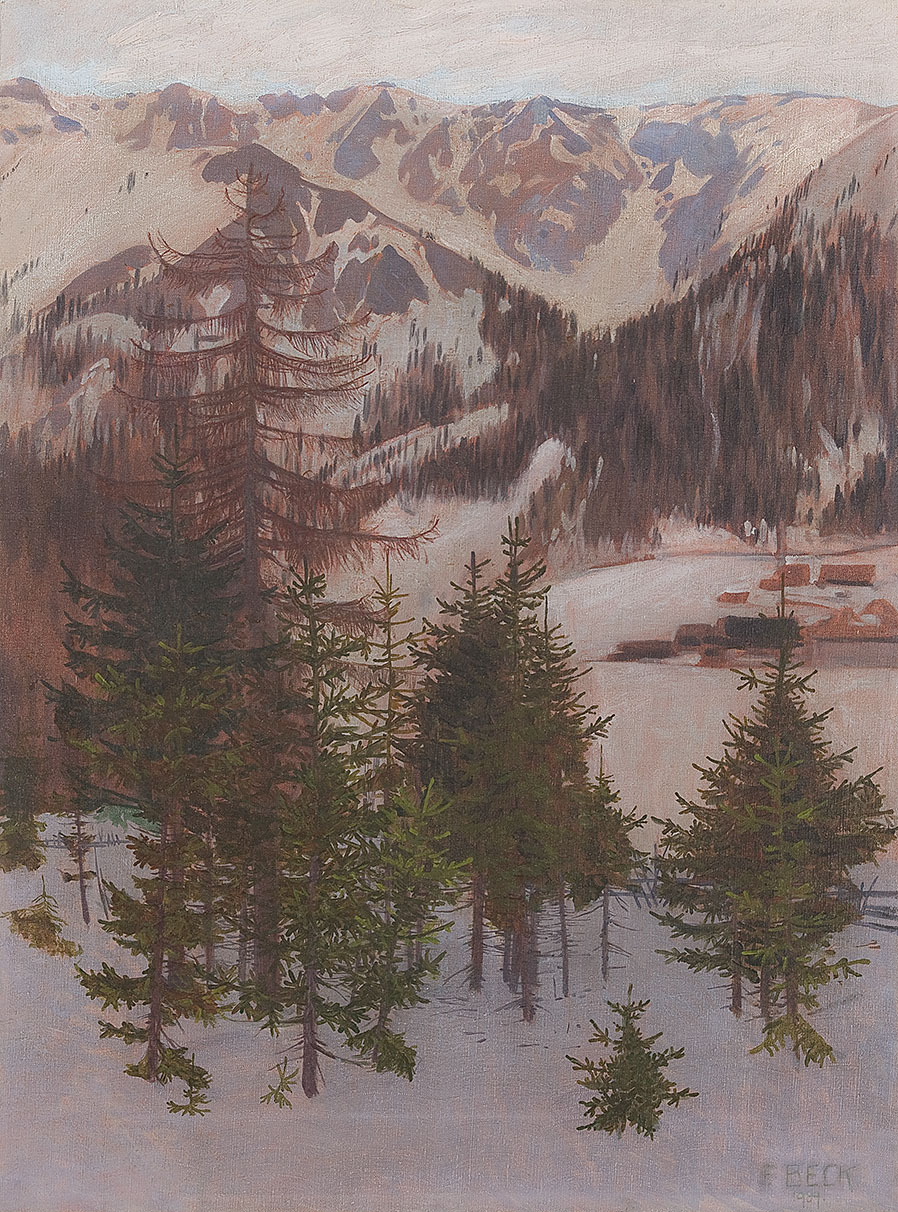
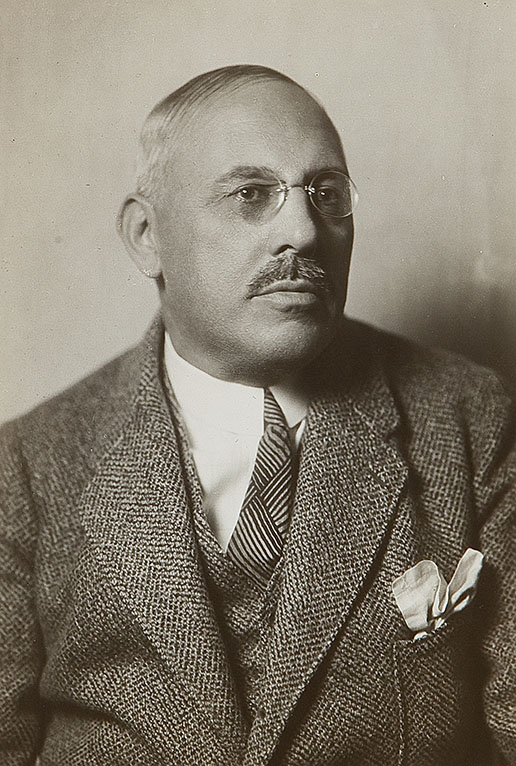
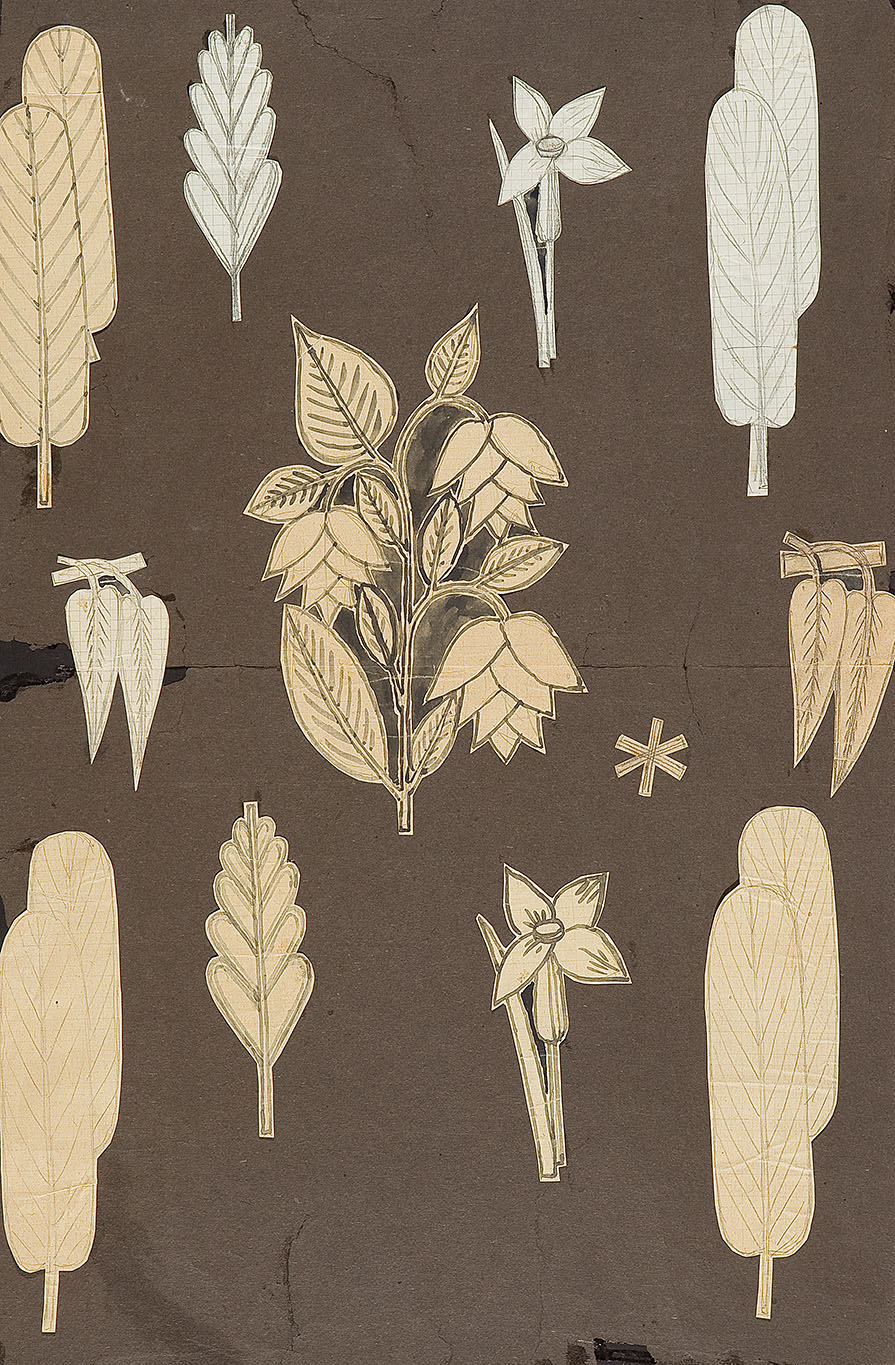
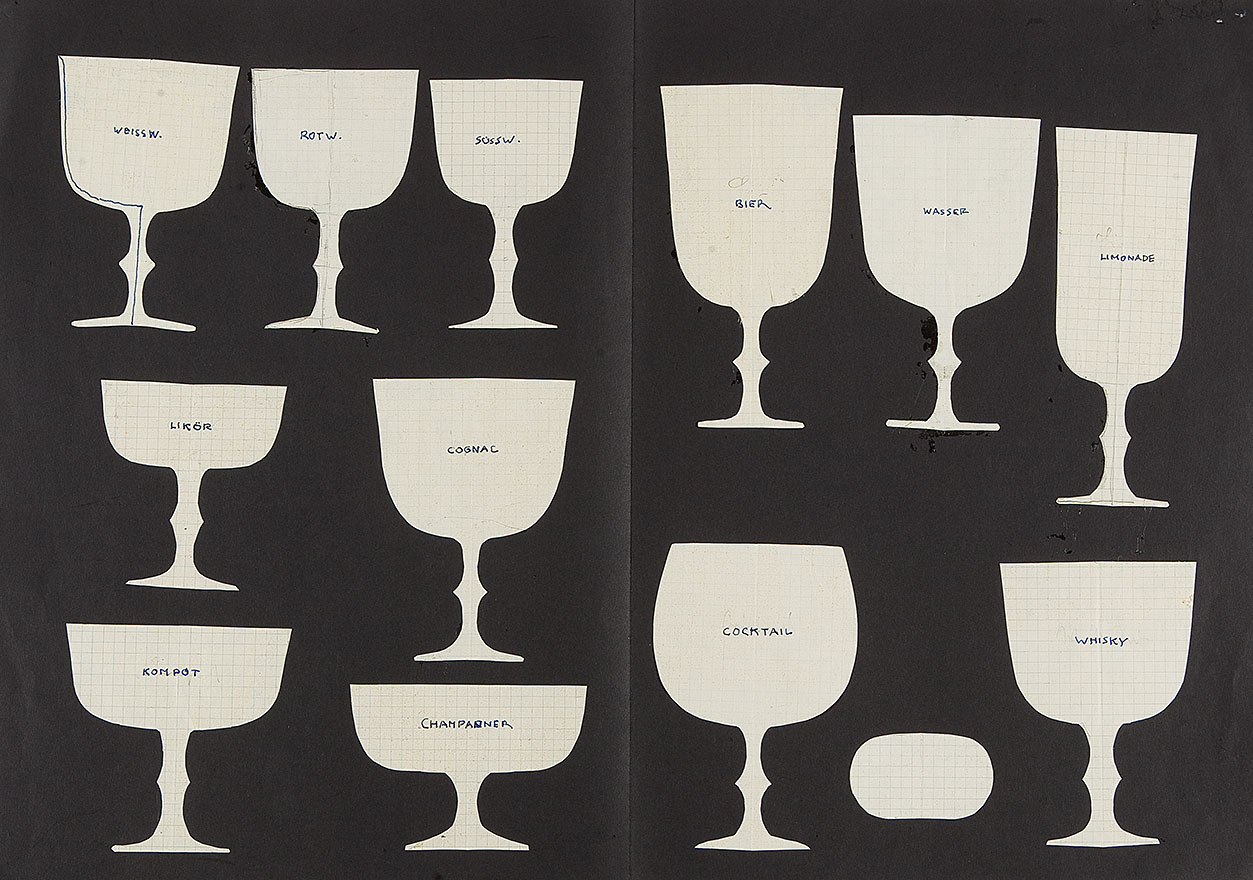
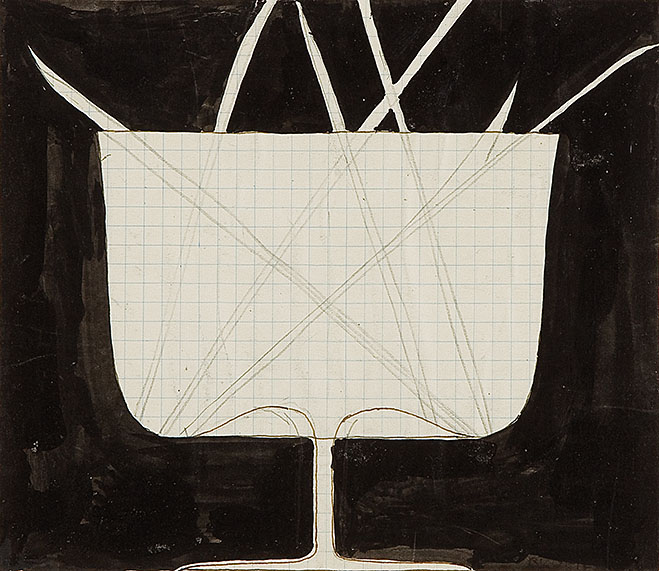
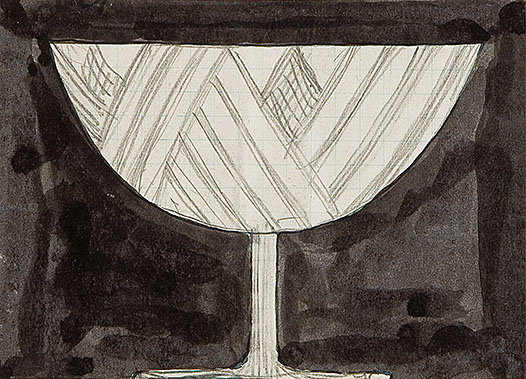
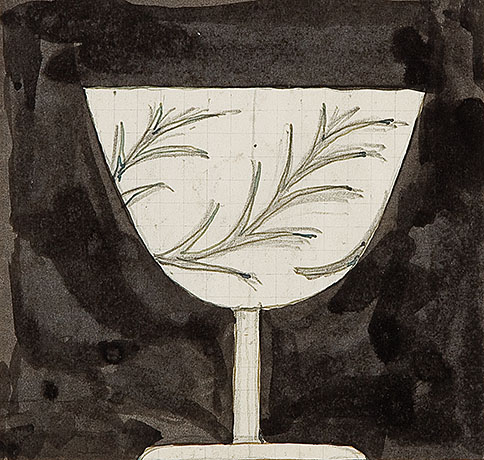
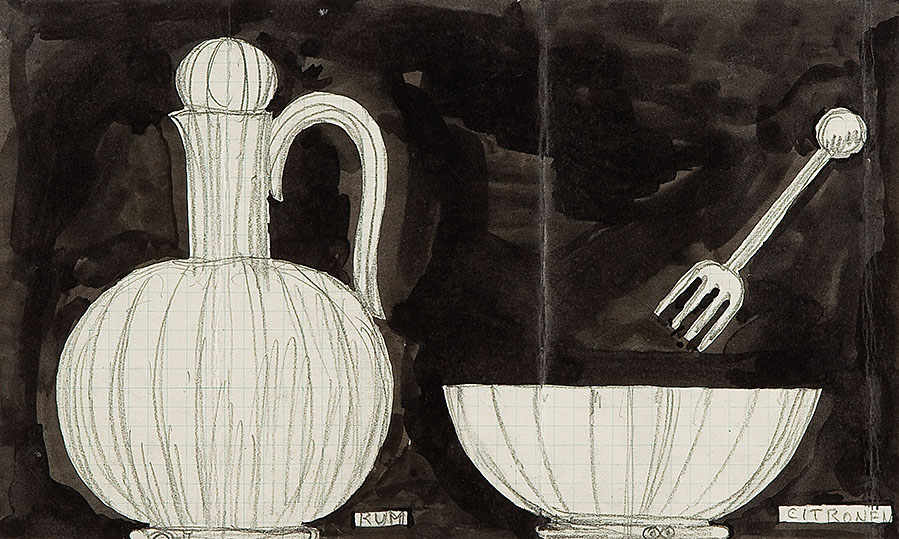
Testen Sie LotSearch und seine Premium-Features 7 Tage - ohne Kosten!
Lassen Sie sich automatisch über neue Objekte in kommenden Auktionen benachrichtigen.
Suchauftrag anlegen